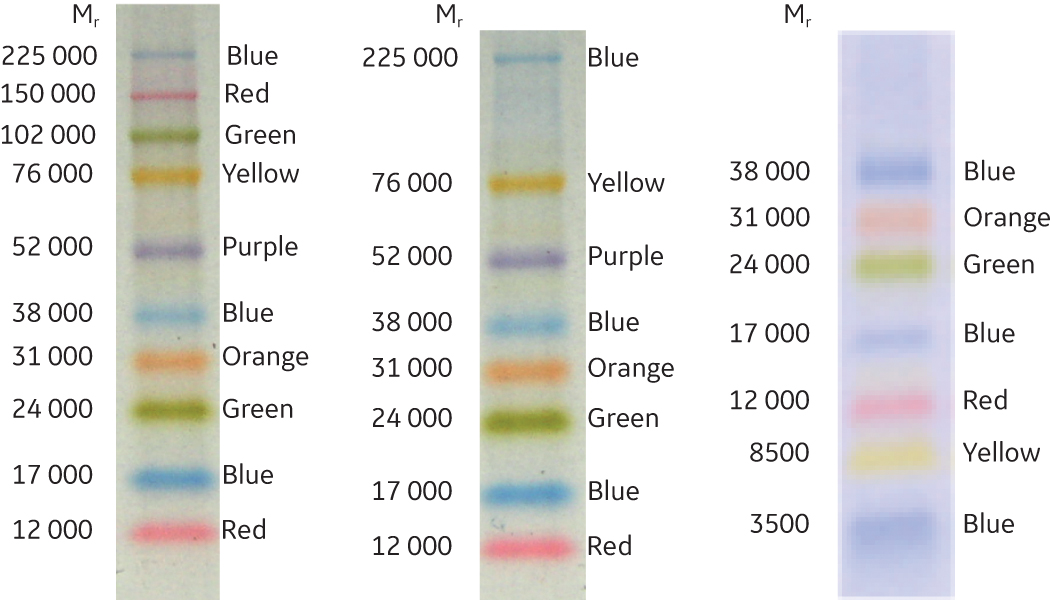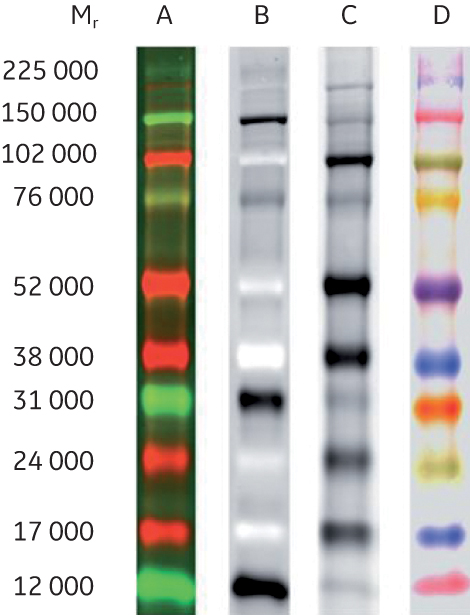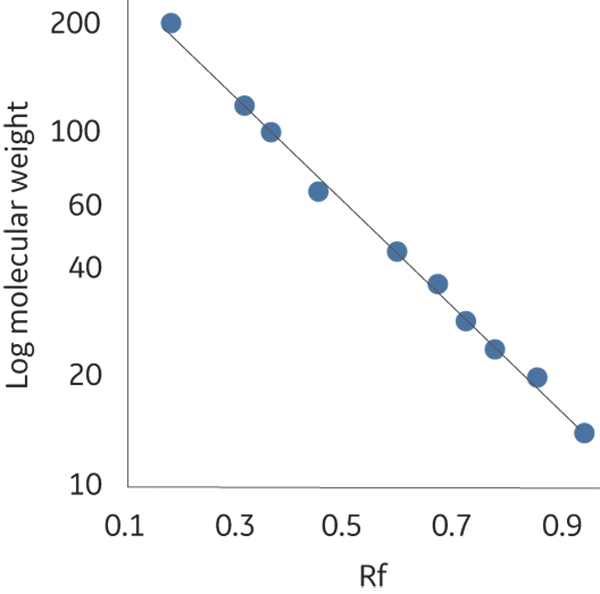Choosing molecular markers for polyacrylamide gel electrophoresis: Western blot
Why Rainbow markers are a good choice when carrying out a Western blot.
There are many types of molecular weight markers available for polyacrylamide gel electrophoresis (PAGE).
Molecular weight markers/protein markers. Gel ladder. Protein standards and protein molecular weight. What do these things have in common?
They are all protein molecular weight markers used during polyacrylamide gel electrophoresis, also known as ‘SDS-PAGE’. Molecular markers help users identify the protein size run in a gel electrophoresis ladder. But with so many options for molecular markers, how do you choose the one to suit your Western Blot application?
This post aims to help you find the best molecular marker by describing the different types of molecular and protein weight markers available and the circumstances you would use them, within immunoblotting.
How do molecular weight markers work?
Molecular marker solutions contain several known proteins sizes, which migrate in the same way as proteins of interest during gel electrophoresis. The distances the molecular markers migrate relate to their molecular weights, with smaller molecular markers migrating further than larger molecular markers.
Comparing the bands between the sample and protein marker can help you to work out the approximate protein molecular weight in your sample.
Types of protein molecular weight markers
Table 1. Protein molecular weight markers typically used polyacrylamide gel electrophoresis and Western blotting
| Marker type |
Feature |
Recommended applications |
|
Rainbow markers (Mr 3500 to 225 000 |
Prestained, visible marker of different colors in gels and Western blots |
Sodium dodecyl sulfate (SDS)-PAGE, Western blot |
|
ECL Western blotting markers (Mr 15 000 to 150 000) |
A dual view marker containing three visible bands of different colours to monitor migration and transfer and tagged proteins. Detectable via chemiluminescence (using film, or charge-coupled device (CCD)-based camera. |
Western blot – ECL detection |
|
Fluorescent Rainbow markers (Mr 12 000 to 225 000) |
Visible Rainbow marker to monitor migration and transfer (for gels and blots, respectively). Detectable using a fluorescence-based imager (laser scanner) or CCD-based imager |
Western blot – multifluorescence |
|
Protein molecular weight markers (Mr 14 000 to 669 000) |
Unlabeled bands for molecular weight determination, visualized by staining using one of several methods (Coomassie™ Brilliant Blue or silver staining for example). |
SDS-PAGE |
Prestained molecule markers for protein weight
Using prestained markers, known as Rainbow markers, have many advantages. One being, monitoring progress of protein sizes running in polyacrylamide gel electrophoresis (SDS-PAGE). Further, rainbow molecular markers also confirm successful transfer to the blotting membrane and provide orientation of the western blot.
Within Rainbow markers, each band has a different and distinct color, making identification easier than with a single color (Fig 1).
Fig 1. Rainbow Molecular Weight Markers are available in three size ranges for use with polyacrylamide gel electrophoresis (SDS-PAGE). Full-, High-, and Low-Range (left to right).
Rainbow molecular markers are available for both chemiluminescence based detection and fluorescence detection applications. The tagged recombinant protein markers are visualized at the same time as the protein of interest is detected by enhanced chemiluminescence (ECL, Fig 2) or fluorescence using CyDye (Fig 3).
Fig 2. Amersham ECL DualVue Western Blotting Markers after polyacrylamide gel electrophoresis on a 4% to 20% sodium dodecyl sulfate (SDS gel) and transfer onto a nitrocellulose blotting membrane. (A) Prestained indicator proteins are shown as a photograph of the membrane confirming efficient transfer of protein to the western blot (B) Tagged recombinant proteins are exposed by chemiluminescence detection as a photograph of the film, following 1 min exposure.
Fig 3. Amersham ECL Plex Fluorescent Rainbow Molecular Markers imaged on a Typhoon scanner. From left to right: (A) Full-color Cy3 and Cy5; (B) Cy3 channel; (C) Cy5 channel; and (D) visible spectrum.
Unlabeled molecular markers and estimating protein size
Unlabeled molecular markers on the other hand, are not visible until stained with Coomassie Blue or another staining reagent you have available. Without stains or tags, these protein markers are free to migrate by their true protein molecular weight. This property provides you with higher precision than prestained protein markers when estimating molecular weights.
If you do need to determine the molecular weight (Mr) of any unknown proteins, you can create a calibration plot like the one in Figure 4. Chart the relative distance of migration (Rf) of the molecular markers against the logarithm of their molecular weights. The Mr of proteins in the samples can be calculated from this calibration plot.
Fig 4. Calibration plot showing the relationship between distance migrated by a protein (Rf) and molecular weight and size of the protein.
Molecular Marker size range
For each molecule marker type, there are protein size range options available from relative molecular weight (Mr) 3500 to 669 000. Selecting a protein size range that relates to the molecular weights of your target proteins helps resolve and identify your proteins.
If you don’t know the expected size or have several proteins of interest with different sizes, choose a wide-range marker solution to cover your needs (Table 1)
For a more detailed description of the molecular weight markers Cytiva supplies, download Western blotting principles and methods handbook.
Download the Western blotting principles and methods handbook for a more detailed description of the molecular weight markers Cytiva supplies, how-to hints and tips, protocols, and much more.



